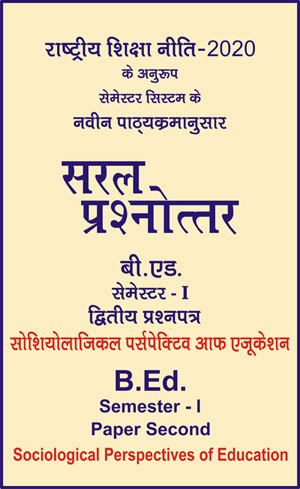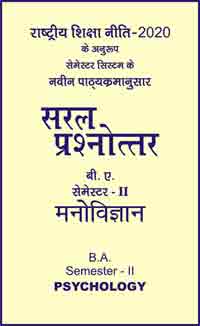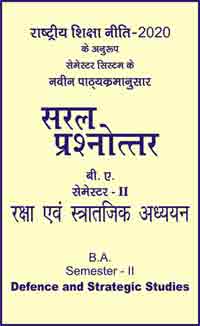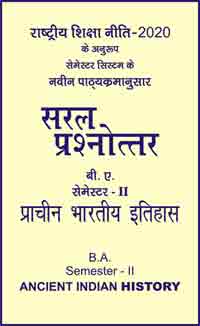|
बी एड - एम एड >> बी.एड. सेमेस्टर-1 प्रश्नपत्र-II - सोशियोलाजिकल पर्सपेक्टिव आफ एजूकेशन बी.एड. सेमेस्टर-1 प्रश्नपत्र-II - सोशियोलाजिकल पर्सपेक्टिव आफ एजूकेशनसरल प्रश्नोत्तर समूह
|
5 पाठक हैं |
|||||||
बी.एड. सेमेस्टर-1 प्रश्नपत्र-II - सोशियोलाजिकल पर्सपेक्टिव आफ एजूकेशन (अंग्रेजी भाषा मे)
Question- Explain the scope of the Judgment for transgender community.
Ans.
This judgement covers persons who want to identify with the third gender as well as persons who want to transition from one identity to another, i.e., to male to female or vice-versa. The Court has directed Centre and State Governments to grant legal recognition of gender identity whether it be male, female or third gender.
Legal Recognition for Third Gender
In recognizing the third gender category, the Court recognizes that fundamental rights are available to the third gender in the same manner as they are to males and females. Further, non-recognition of third gender in both criminal and civil statutes such as those relating to marriage, adoption, divorce, etc., is discriminatory to the third gender.
Legal Recognition for Persons Transitioning within Male/Female Binary
As for how the actual procedure of recognition will happen, the Court merely states that they prefer to follow the psyche of the person and use the “Psychological Test” as opposed to the “Biological Test.” They also declare that insisting on Sex Reassignment Surgery (SRS) as a condition for changing one’s gender is illegal.
It is yet to be determined exactly as to what procedures will be followed by the government for actually recognizing gender identity. But a useful indicator might lie in the Ministry of Social Justice and Empowerment’s (MSJE) Expert Committee Report on Issues Relating to Transgender Persons. The Supreme Court states that its legal declarations will be given effect based on the recommendations of this report, and the report itself states that persons shall have the right to choose any of the options - male, female or third gender - independent of surgery or hormone treatment, along with providing a distinct procedure for such recognition.
|
|||||














